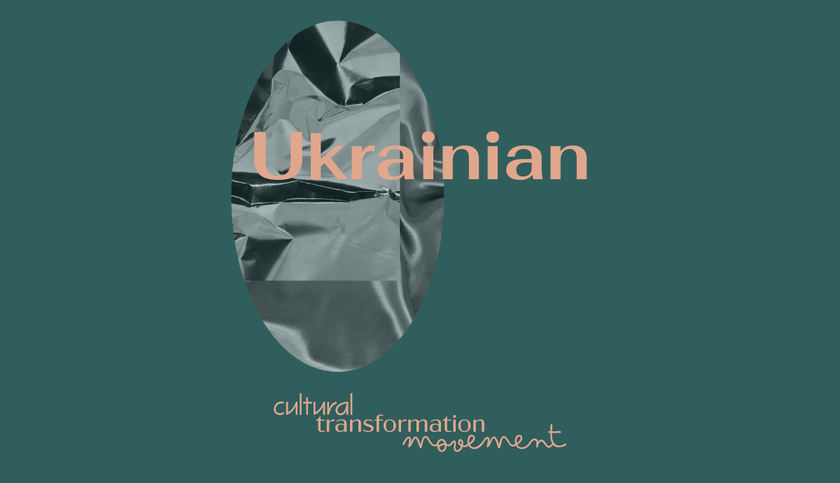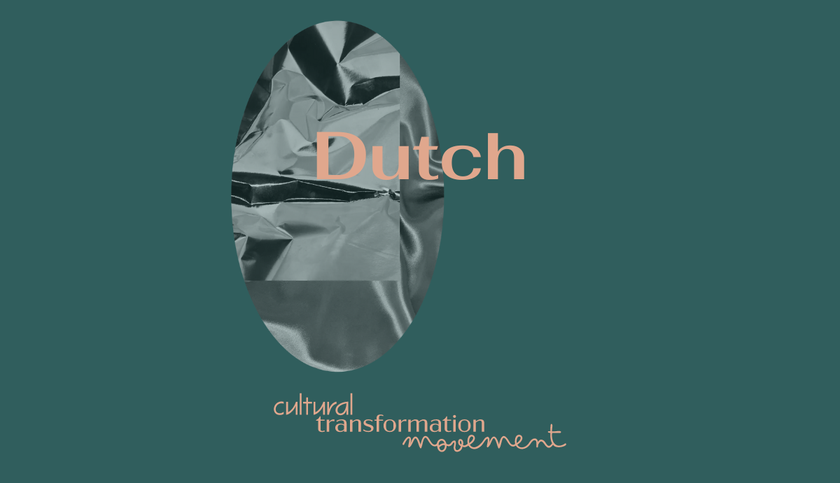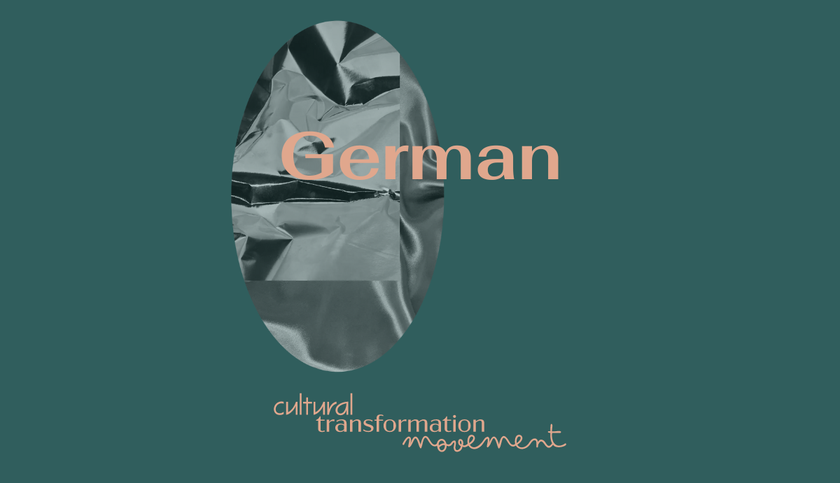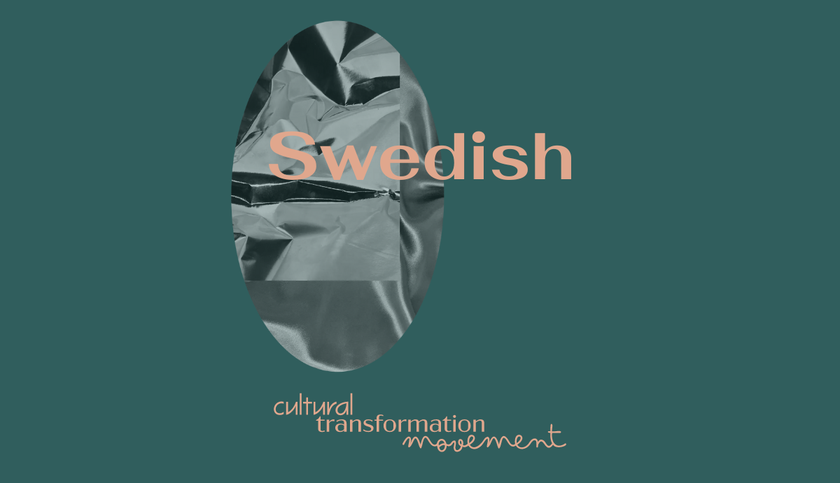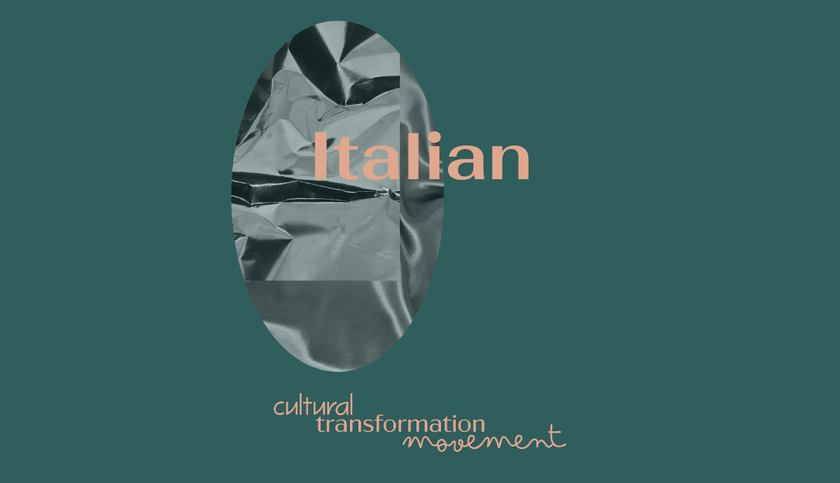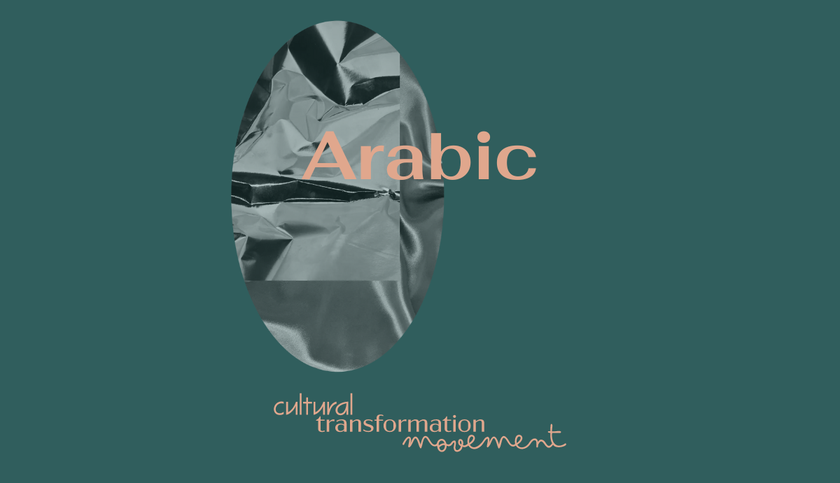Under Construction
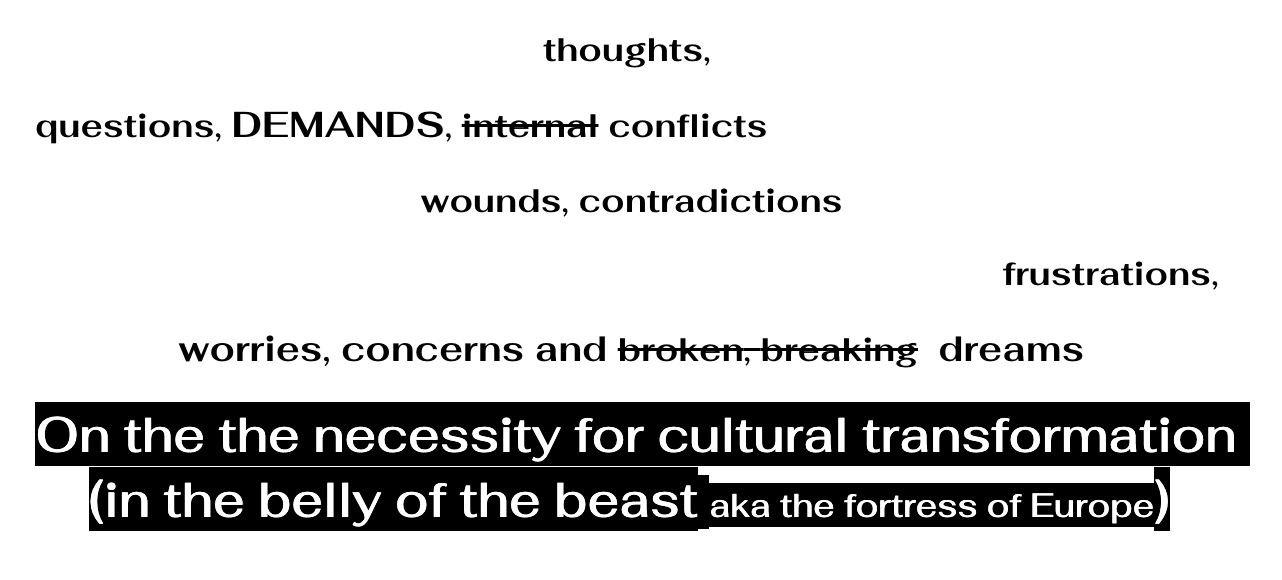
Within the EU-funded Cultural Transformation Movement project, we #AoCs who are the artists/agents of change in Austria, Belgium, Italy and scattered across Europe (as a consequence of the w̶a̶r̶ invasion of Ukraine) were given the task to collectively create an artistic statement.
What we share here is an unfinished, deliberately unpolished, growing work in progress that connects to the ancient futures of the struggles and visions of so-called "underrepresented communities". In that wider sense the work continues until transformation in the cultural field and with it and beyond the eco-social world as a whole is achieved.
We chose to create an artistic statement centered on questions. We chose questions because we were not asked to ask them.
We ask questions because we are tired of simply giving answers.
We ask questions because we don't like the answers we have been given.
We ask questions because the conflicts and crises we are experiencing force us to rethink our approach. We ask questions because the conflicts and crises we are experiencing force us to question our assumptions, and to adapt in ways we never thought possible or necessary.
We ask questions because each individual experience, with its unique challenges and lessons, contributes to the fabric of our shared humanity.
We ask questions because through this process of “̶i̶n̶t̶e̶g̶r̶a̶t̶i̶o̶n̶”̶ ̶a̶n̶d̶ dialogue, we imagine a future that embraces diversity, celebrates differences and finds strength in our collective humanity.
We ask questions, because we believe that critical questions and questionings are harder to be turned into a token diversity show.
We ask questions as a way to give importance and to voice what usually remains unspeakable and voiceless in statements like these. We ask questions as a way to break and question the conventional forms of statements like these.
We ask questions to open up the space even to things we are not sure of.
We ask questions to dare to go deeper than a polished surface.
We dare to ask questions as a transformative practice to question how and what we learn about ourselves, others and the world we live in.
We ask questions to expand our audacity in imagining a different world from within the belly of the beast, from within the fortress of Europe.
We ask questions to create space for vulnerabilities, insecurities, doubts, conflicts, criticisms, dreams, wounds ....
We ask questions because we insist
that vulnerabilities, insecurities, doubts, conflicts, criticisms, dreams, wounds ....
are not to be erased.
How can I write an artistic statement as an undercover neurodiverse Black artist of change from within the belly of the beast aka the fortress of Europe when to use the title of Olumide Popoola’s poem “you can’t breathe water” (Ref. 1)?
How can I write an artistic statement as a Sicilian boy, from an ancient, traditional Sicily, underdeveloped, too intransigent to realize that it is such, make myself the spokesman of a generation of outcasts?
How can I write an artistic statement as a female cultural practitioner navigating between different languages that has created her home in the limits of the fortress of Europe, as a cultural worker that tries to take place to amplify the voices that have been silenced by a patriarchal and colonial system that my ancestors have reinforced?
How can I write an artistic statement as a queer feminist mixed race artist carrying intergenerational colonial trauma, from within the belly of the beast? H̶o̶w̶ ̶t̶o̶ ̶n̶o̶t̶ ̶b̶e̶ e̶x̶h̶a̶u̶s̶t̶e̶d̶,̶ ̶w̶o̶r̶k̶i̶n̶g̶ ̶i̶n̶ ̶r̶a̶c̶i̶s̶t̶,̶ ̶s̶e̶x̶i̶s̶t̶,̶ ̶c̶l̶a̶s̶s̶i̶s̶t̶,̶ ̶a̶b̶l̶e̶i̶s̶t̶ ̶s̶t̶r̶u̶c̶t̶u̶r̶e̶s̶,̶ ̶f̶a̶c̶i̶n̶g̶ ̶s̶y̶s̶t̶e̶m̶s̶ ̶o̶f̶ o̶p̶p̶r̶e̶s̶s̶i̶o̶n̶ ̶d̶a̶y̶ ̶b̶y̶ ̶d̶a̶y̶,̶ ̶b̶e̶i̶n̶g̶ ̶t̶o̶k̶e̶n̶i̶s̶e̶d̶,̶ ̶s̶i̶l̶e̶n̶c̶e̶d̶?̶ ̶H̶o̶w̶ ̶n̶o̶t̶ ̶u̶s̶e̶ ̶e̶v̶e̶r̶y̶ ̶s̶p̶a̶r̶e̶ ̶m̶i̶n̶u̶t̶e̶ t̶o̶ ̶e̶n̶g̶a̶g̶e̶ ̶a̶s̶ ̶a̶n̶ ̶a̶c̶t̶i̶v̶i̶s̶t̶ ̶w̶h̶e̶n̶ ̶a̶ ̶g̶e̶n̶o̶c̶i̶d̶e̶ ̶i̶s̶ ̶h̶a̶p̶p̶e̶n̶i̶n̶g̶ ̶i̶n̶ ̶P̶a̶l̶e̶s̶t̶i̶n̶e̶?̶
How can I write an artistic statement as a female artist with a disability when the artistic environment is not yet aware of ableism in society and in the art field and is still looking from an internalized capitalist gaze? How can one not be indignant by the many stories of colleagues who work in precarious situations as artists from underrepresented communities? How to find and co-create the right environments for artists whose careers are determined by similar issues?
How do we matter what it means to write an artistic statement as an Ukrainian artist in an EU project for cultural transformation while being on an army mission?
How to be in this world, when you are being an Ukrainian artist in military service having an internal conflict that questions the appropriateness of everything you have done before?
Ref.1: https://writersmosaic.org.uk/content/you-cant-breathe-water-olumide-popoola
How to
create, contribute, find language, unsilence, unlearn, transform
dismantle, expose, disrupt, show intertwining, liberate,
care, encourage, dream, hope, heal, imagine, take time,
embrace complexity, become allies &
move together?
How to collectively create an artistic statement from within the fortress of Europe aka the belly of the beast that inspires "to dare to invent the future" (Ref. 2)?
How can we create an artistic statement in a language that will always exclude some?
How to take time? How to take time in a system ruled by production logic? How to take time to create art, to create artistic statements? How to take time to hear and to listen to unheard voices?
How can we contribute to transforming the violent, glorified neocolonial structures of the fortress of Europe (including "green colonialism" (Ref. 3)) from within the belly of the beast?
How can we create art that dares to transform the current times of war, crises, oppressive eco-social circumstances, status quo and structures within the belly of the beast?
How do we avoid romanticizing war and acknowledge it as a harsh reality?
What does holding a collective responsibility in the face of aggression mean to us as artists?
How can we build bridges while an enigmatic world of evil is redrawing the new borders of Europe with bombs?
How can we disrupt Europe’s “racism amnesia” (Ref. 4) and contribute to decolonial architectures of remembrance that matter the rich histories of multifaceted resistances?
How can we find languages that healingly matter and address intergenerational trauma?
How can we align ourselves with the forces of peace, understanding, and compassion?
How can we center the struggle of the “Invisibles” the undocumented agricultural workers within the EU, "the wretched of the earth, left (....) in miserable work and living conditions" (Ref. 5) for the right to even have rights?
How can we expose the systematic hypocrisy of the fortress of Europe that builds on the exploitation of the “Invisible field workers” to bring fruits and vegetables (sometimes organic) into supermarkets in the EU?
How can we show the intertwining of these struggles?
How can we be(come) allies ? What do we need to consistently unlearn to build sustainable allyships dedicated to the struggle for global liberation?
How can we stay aware and self critical? How can we point out to people that are systematically absent?
How can we transform our collective understanding through adaptability and resilience?
How can we create a liberating SPACE for people to meet, think and unite? And what kind of space would it need to be?
How can we foster a community of tolerance and mutual respect?
How do we contribute to the unsilencing of silenced stories that yearn and struggle to be (re)membered and set free urgently?
How can we support and connect to each other's struggles?
How can we envision a future that embraces diversity, celebrates differences, and finds strength in our collective humanity?
How can we unlearn to leave no one unheard/ unseen?
How can we commit to integrate communities through dialogue about both present challenges and future aspirations?
How can we leave the door open? Some perspectives are not addressed when not everyone is in.
How can we encourage sustainable practices of caring ?
How can our efforts become an investment in the future, advocating for a world where understanding and love triumph over division and hatred?
How can we embrace opposing needs?
How can cultural exchange play a role in opening conversations and bridging divides?
How can we build bridges while an enigmatic world of evil is redrawing the new borders of Europe with bombs?
How can we not get used to the idea of the existence of war and become a fortress of peace?
How can we embrace complexities and contradictions?
How do we consistently unlearn what refrains us from practicing deep listening?
How can we un/learn to see and take care of each other's wounds?
How can we “help” governments and stakeholders to see the importance of cultural transformation?
How to make the art scene and all of its b̶u̶i̶l̶d̶i̶n̶g̶s̶ spaces and programming more accessible?
How to make art schools and all of their buildings and programs more accessible?
How to dismantle, address and resist tokenism?
How can we free ourselves from the logic of victims olympics to decolonize solidarity?
How to keep breathing?
How can we make the art field see that it is important to have diverse voices in places where decisions are made?
How to free our bodies, our minds, our feelings?
How to keep dreaming, hoping, imagining, creating?
How to survive, stay alive, unharmed, unattacked and safe?
Ref. 2: Thomas Sankara
Ref. 3: As Gunn-Britt Retter Head of Arctic and Environmental Unit, Saami Council states: “The green shift is nothing more than a continued extraction of resources in Sámi areas, as has been the tradition since the earliest encounters between cultures. The difference is that resource utilization has been given a nice color, green; we call it "green colonization". We were first colonized by people from outside our lands, then colonized by climate change itself, driven by people from outside our lands, and are now being colonized a third time by responses to climate change". See:https://www.arctictoday.com/indigenous-cultures-must-not-be-forced-to-bear-the-brunt-of-global-climate-adaptation/
Ref. 4: Fatima El-Tayeb
Ref. 5: Aboubakar Soumahoro
Call to question. Call to action for structural transformations
Call to inaction “Rest is Resistance” (Ref. 6)
- We question the still normalized colonial capitalist gaze and exploitive modes of production in intersectional ways.
- We resist being tokenized as neo-liberal diversity decor or alibi. To speak with Audre Lorde’s words: "We are not a figment of your imagination or an exotic answer to your desires. We are not some button on the pocket of your longings".
- We demand structural change and transformation.
- Art that “transformingly” matters and centers unheard voices.
- Matter the voices of the 22.822 migrants (at least) (Ref. 7) that have found their unmattered death since 2014 and call out the underlying violent structures of the fortress of Europe.
- Art that is consistently “awaring” itself of the bodies : our bodies and their interconnectedness as artists, as people and beyond. Therefore accessibility and intersectionality are a necessity.
- Art that does not get tired to strive to be, become and grow awareness of the multifaceted contexts, environments that we live and do not live in and beyond
- We call for the necessity of a cultural transformation. To use the words of E. Jane: "We are beyond asking should we be in the room. We are in the room, We are also dying at a rapid pace and need a sustainable future. We need more people, we need better environments, we need places to hide, we need Utopian demands, we need culture that loves us". (Ref. 8)
- Art that transformingly questions and is open for generative questionings.
Ref. 6: See: Rest is Resistance: A Manifesto by Tricia Hersey. Rest Life https://www.youtube.com/watch?v=nENorI4rWeU
Ref. 7: See: https://missingmigrants.iom.int/
Ref. 8: E. Jane in NOPE (a manifesto) https://e-jane.info/Text
We ask questions, because we ask ourselves, alone and collectively, and you reading these words, which questions need to be asked to invite cultural transformation within the fortress of Europe?
Which questions do you yearn to be asked?
(Which questions are you tired of being asked?)
Which questions remained painfully unasked in the questions you read here?
We ask questions as a way to invite you to this collective construction side by asking:
What are you forgetting and still yearning to be remembered?
What questions that you read here resonate with you and how?
What questions that you read here need to be questioned and how?
What questions do you feel are still in urgent need to be asked?
What are your questions?
What are you questioning?
Full artistic statement in one document?
Click here to readBehind the artistic statement
The artistic statement emerged from a collaborative process, with diverse voices blending to articulate the urgency for cultural transformation. Explore the profiles of the individuals shaping this collective artistic inquiry.
Araba Evelyn Johnston-Arthur
Agent-of-change at Brunnenpassage.
"The Cultural Transformation Movement project located within the European Union is located within the fortress of Europe, a continent crucially shaped by racism amnesia and present mostly unrecognized colonial legacies".
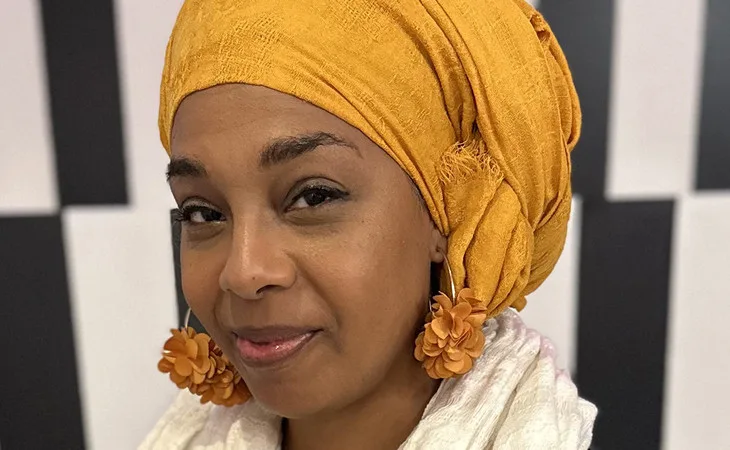
Born to parents who migrated to Austria from Ghana and Finland, Araba’s mother gave birth to her within the fortress of Europe in Vienna.
Araba, who was cofounder and activist of PAMOJA - The Movement of the young African Diaspora in Austria and the research group of Black Austrian History, studied African-, Migration and Racism studies in Austria, Ghana and the UK and Black Politics, International Relations and African Diasporian History at the Historically Black Howard University in Washington DC.
She is a trans-disciplinary researcher, artistic cultural worker, educator, wounded writer, recovering storyteller growing into becoming a junior-junior-elder in decolonial-untraining engaged in creating sustainable architectures of memory that bring unrecognized knowledge into collective liberating knowing.
Araba is currently part of the director’s collective of MUSMIG (Museum of Migration), struggling for self-determined historization of migration in Austria, while at the same time questioning the foundational violence of museums in Europe. Also, she teaches at the University of Applied Arts in Vienna.
Photo credit: Fariba Mosleh.
"The Cultural Transformation Movement project located within the European Union is located within the fortress of Europe, a continent crucially shaped by racism amnesia and present mostly unrecognized colonial legacies. What is at stake is the willingness to confront itself with the violent structures that CTM finds itself located in and beyond, structures in urgent need of transformation. Centering culture and art recognizes their transformative power in the crucial strengthening of multifaceted practices of resistances, while envisioning a world yet to be born".
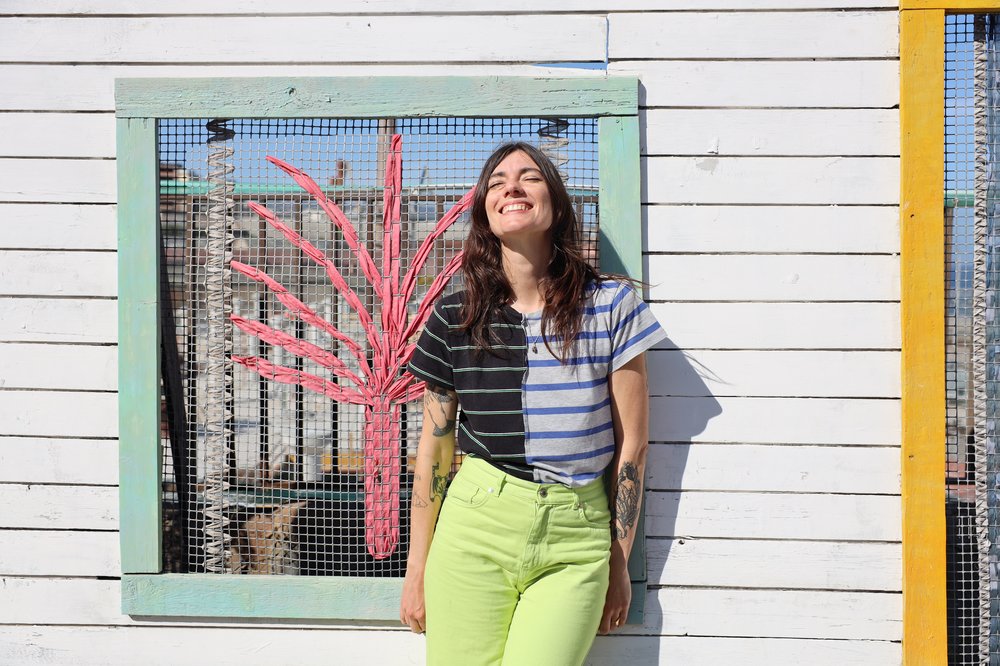
Elie Laucher
Agent-of-change at Zo Centro Culture Contemporanee.
"It is a necessity to open, create and curate space for people whose voices were too often silenced and bodies made invisible in a homogenous elitist cultural context".
Born in France, Elie studied applied art, fashion design and textile design. Then, she moved to London where she worked as a print designer for seven years for various brands.
In 2019, her path led me to Zō Centro Culture Contemporanee in Sicily, where a 10-month volunteering project transformed into a permanent role, as she grew so attached to the place and people after the project ended. Now, she is mentoring the new volunteers there.
Alongside her “official” work, she co-organized a festival of illustration, championing local artists and fostering collaboration. Additionally, she co-created a series of workshops, where the perception of waste promoting upcycling was explored while creating moments of togetherness among the participants.
Her creative practice is grounded in observation, connection and action with a strong interest in textiles, upcycling, DIY printing techniques. She enjoys collective drawing, using the "cadavre exquis" technique to inspire synergies between people.
Photo credit: Francisca Lima.
"It is a necessity to open, create and curate space for people whose voices were too often silenced and bodies made invisible in a homogenous elitist cultural context. Being a project with both international and local scope, I believe CTM project could have the power to facilitate concrete actions and collectively unlock tools to raise awareness, provoke thought, and create positive change in the Sicilian region".
Emanuele Arturo Miceli
Agent-of-change at Zo Centro Culture Contemporanee.
"I live in an extremely traditional and uncompromising context in which patriarchal logic prevails and in which prejudice and fear of diversity are very much present, even towards the entire cultural environment, a place from which many people emigrate".
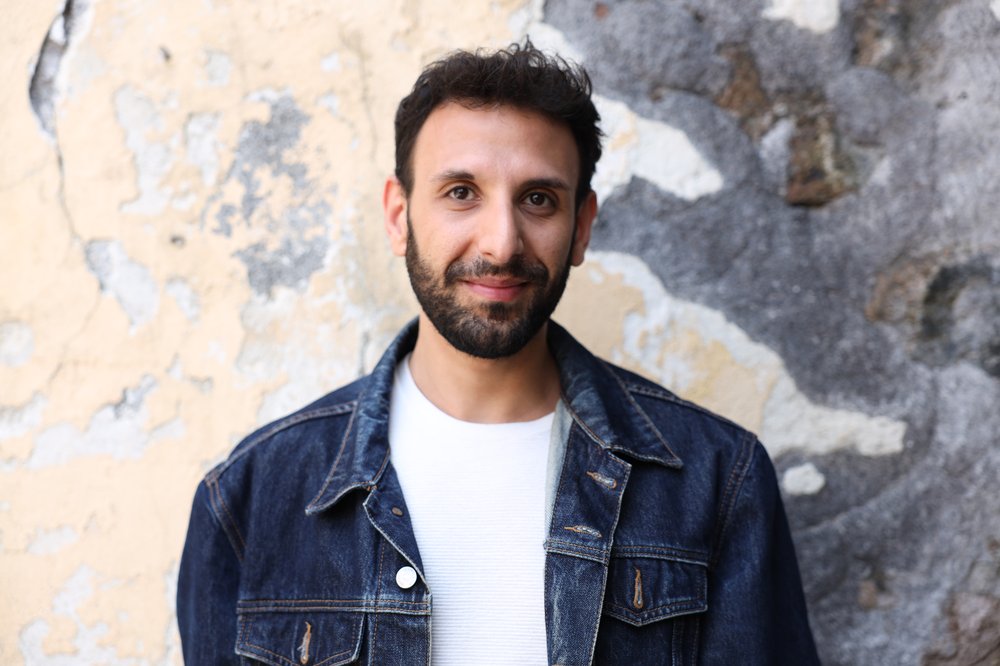
Born in 1994 and raised in Troina, a town in the Sicilian hinterland, Emanuele became interested in the world of art and literature as a child thanks to his mother, who was a librarian.
At 20, he moved to Catania, where he graduated in industrial engineering and started writing theatre reviews for Zō Centro Culture Contemporanee, a multidisciplinary cultural centre.
Since 2023, he has been working there as a support to the project manager Pamela Toscano, focusing on administrative aspects, and specializing in the search for public funds for the realization of the cultural centre's activities. At the same time, he collaborates with an amateur theatre company, supervising the productions and dramaturgy of the shows.
Photo credit: Raquel Bonet.
"I live in an extremely traditional and uncompromising context in which patriarchal logic prevails and in which prejudice and fear of diversity are very much present, even towards the entire cultural environment, a place from which many people emigrate. I think the CTM project can be the beginning of a process of self-awareness that can encourage young people to invest in their own territory and skills and can amplify the voice of those who believe they do not have one, fight the current logic of power and finally take concrete actions aimed at true social inclusion for a more meritocratic society".
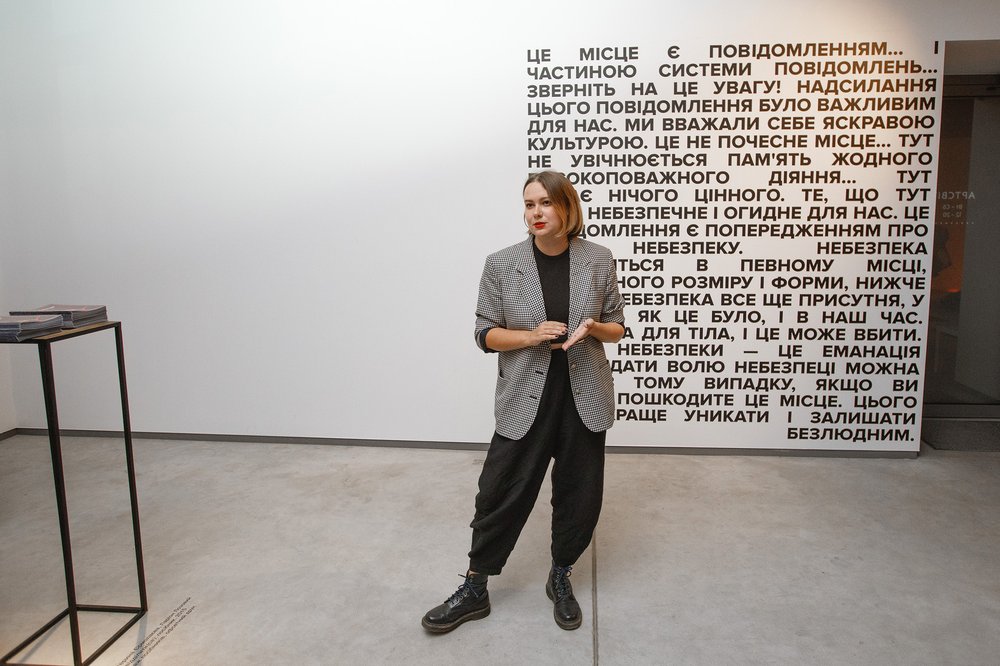
Kseniia Ulianova
Agent-of-change at IZOLYATSIA. Platform for Cultural Initiatives.
"By engaging in cultural dialogues and initiatives, we can build a community atmosphere where safety and compassion are prioritized".
Kseniia Ulianova is an art historian, art critic and independent curator. Born in 1995 in Kyiv, Ukraine. Graduated from National Academy of Fine Art and Architecture in Kyiv and Faculté des lettres in Sorbonne University.
Her curatorial practice is currently in its process of becoming. While working in many Ukrainian galleries, museums and art centers, she discovered the practice of exhibition and had the opportunity to learn from the best Ukrainian curators. Thanks to these experiences, she developed an affection for the curatorial method built on the formula of the exhibition – instruction: the ability to give the viewer a plan of action to perceive the statement.
At the heart of her research are the city and the urban environments within the framework of personal-political interactions. She takes interest in care practices aimed at building interactions with the environment with the intention to discover how post-industrial spaces and gentrification manifest themselves as socio-political acts.
Photo credit: Artsvit Gallery.
"In the context of the war in Ukraine, CTM project provides a valuable perspective on how, through culture, we can discuss and promote inclusivity. Additionally, it acts as a catalyst for fostering a safe and caring society. By engaging in cultural dialogues and initiatives, we can build a community atmosphere where safety and compassion are prioritized. This, in turn, encourages a more resilient social fabric, capable of withstanding and healing from the challenges posed by war".
Dounia Mahammed
Agent-of-change at VIERNULVIER.gent.
"I think change, growth, connection and love are needed in many places. Especially here in Europe questioning is needed, listening, repositioning, repair".
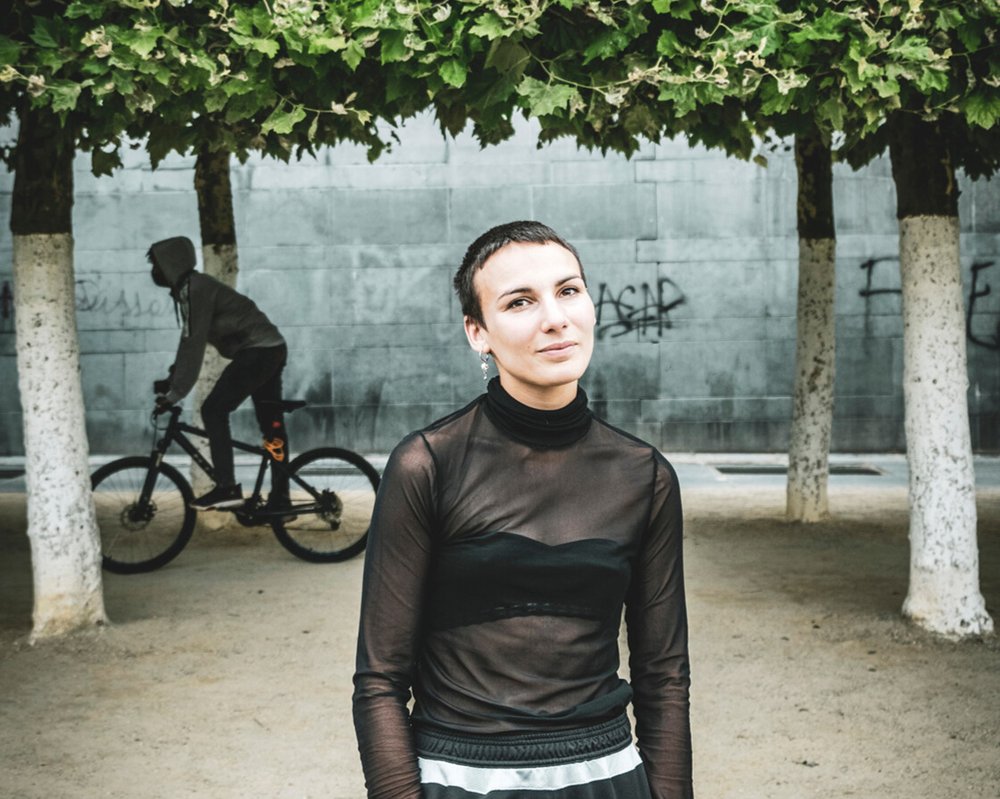
Dounia Mahammed (she/they) was born in Brussels and graduated from the drama program at KASK in 2015. She describes herself as a queer, searching, writing, and creative performer, with a special love for plants, clay, color, crows, wood, water, cornstarch (binder!), questions, movement, and being moved.
Dounia's work often plays with language and sound, exploring ways of (mis)communicating. It attempts to say something about being human, seeking connection, navigating between wonder and doubt. Loving activism and starting as a freelance confidant also hold an important place alongside her artistic work.
Photo credit: Heleen Rodiers.
"I think change, growth, connection and love are needed in many places. Especially here in Europe questioning is needed, listening, repositioning, repair. We need time, more time, and even more time and space to reflect and look for ways of living and working, also in the art field, that embrace diversity and create more accessible, responsible, caring spaces".
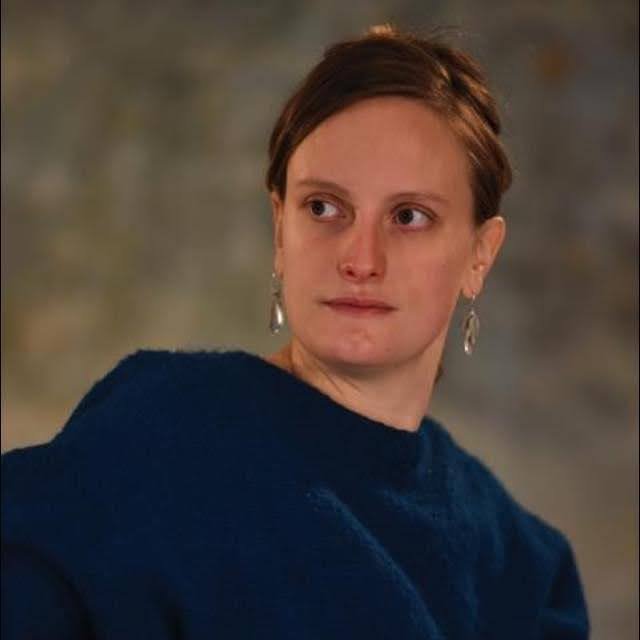
Mira Bryssinck
Agent-of-change at VIERNULVIER.gent.
"I believe the arts is a place of encounters. Encounters between material and artists, artists and audiences, and in general: people and their thoughts, hopes, dreams, fears".
Mira Bryssinck is a theatre-maker, actress and activist graduated 2016 from KASK in Gent. She is very interested in how we can give words to undisclosed feelings and how we can give them form with words and with or bodies. She also wonders what it means to have, give or take space in society within the arts. She made the pieces UTOPIA and LETTER in which the encounter between people with different backgrounds formed the bases of the work.
Mira is co-founder of the collective Par Hasard. A hybrid collective that both creates work, curates a work in progress platform and gives workshops. The bases of the collective is connection, accessibility and experimentation. As an artist/activist with disabilities, Mira is also part of cripping the space, a grassroots movement from artists and cultural workers with disabilities.
Photo credit: Monty.
"I think we need more connection with each other. I believe the arts is a place of encounters. Encounters between material and artists, artists and audiences, and in general: people and their thoughts, hopes, dreams, fears. I believe CTM project can be also an important encounter as well. We all come from different contexts and by that we can learn from each other and exchange on the challenges we experience. Those challenges are always attached to society. Together we can make these challenges, questions and dreams visible. We can learn more by collecting knowledge together".
Laura Camacho Salgado
CTM project's Artistic Transformation Facilitator.
"There is a will for inclusion, diversification, and increased accessibility, as well as to unlearn old biases. However, the pace of change is too slow".
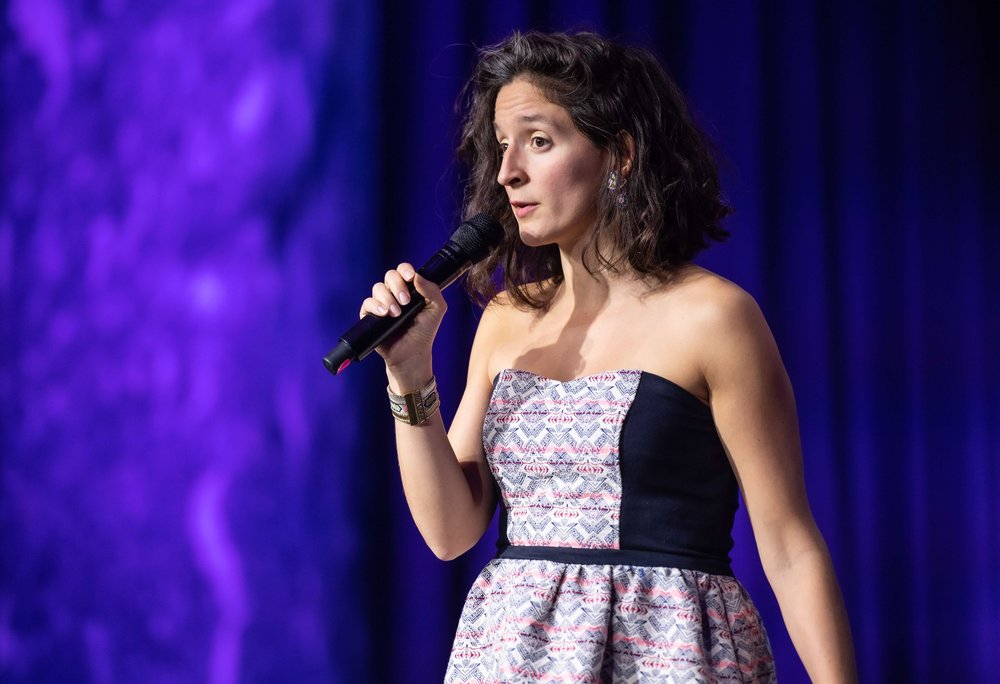
Laura Camacho Salgado (Colombian-born and Oslo-based) is the Artistic Transformation Facilitator at the CTM project.
With over a decade of experience in fostering connections across borders and recognizing the transformative power of art, Laura has played a pivotal role as the Head of the International Program at Oslo World festival. She is also a co-creator of innovative initiatives such as Map the World and the Utopian Manifesto, having curated the festival's interdisciplinary program and championed cultural institutions and artists in the fight for freedom of expression and gender equality.
Laura has contributed to transformative projects like Keychange, empowering underrepresented genders in the music industry. She has been also Program Advisor at Film from the South Festival and as a Jury Member of Spellemannprisen and Global Toronto.
With a diverse academic background in literature, arts, and cinema, Laura's research explores transnational representations of migrant bodies in cultural narratives across borders. Laura's extensive participation in conferences and panel debates worldwide, focusing on topics such as festival organization, diversity, equity, and inclusion, underscores her exceptional public speaking skills and her ability to effectively represent organizations.
Photo credit: Lars Opstad.
"There is an increased awareness of the gaps within the cultural sector that have silenced voices for centuries, perpetuating colonial and patriarchal perspectives. There is a will for inclusion, diversification, and increased accessibility, as well as to unlearn old biases. However, the pace of change is too slow. The CTM is crucial for igniting this transformation, for creating avenues to share strategies within a global network".
